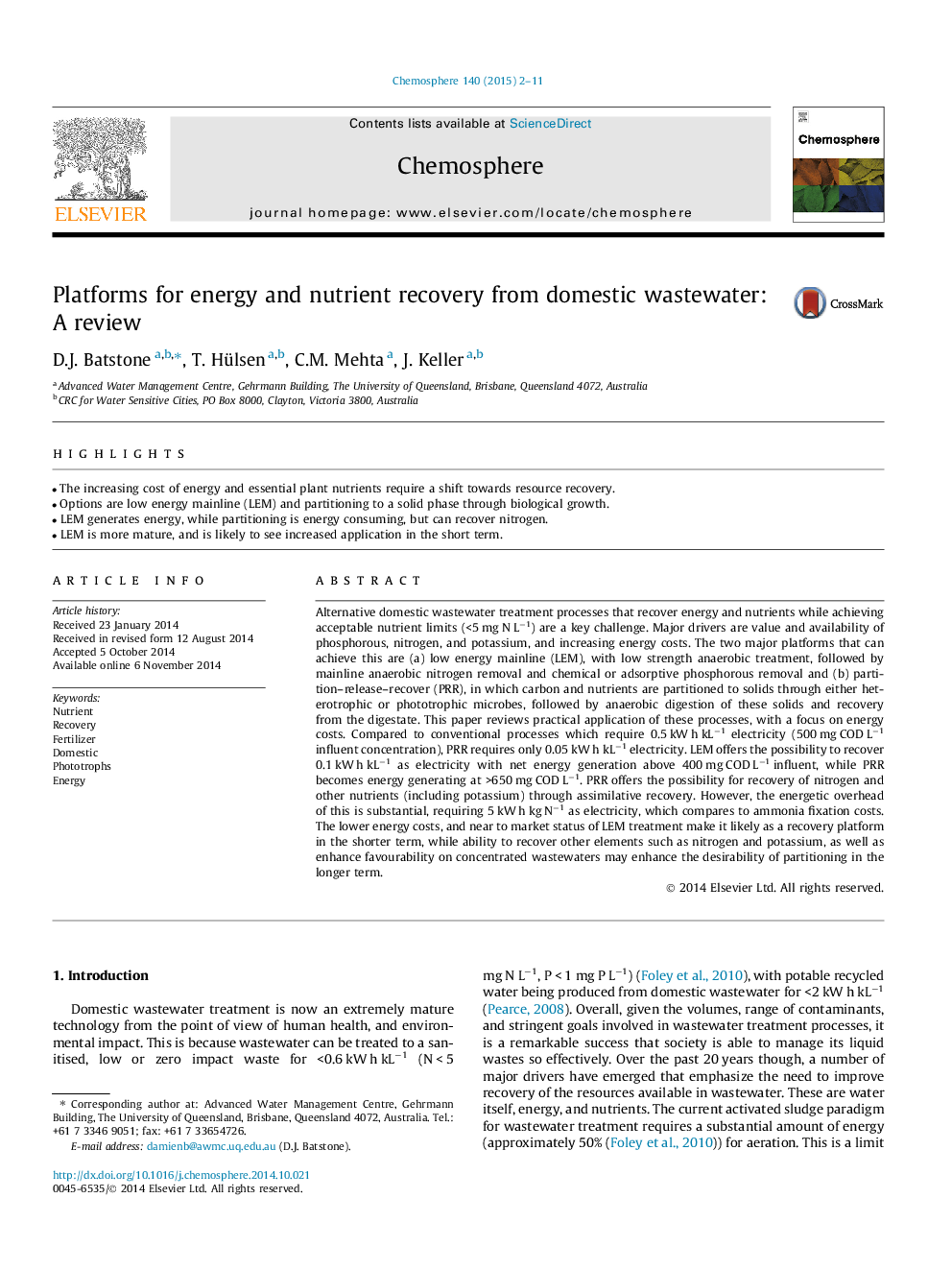| کد مقاله | کد نشریه | سال انتشار | مقاله انگلیسی | نسخه تمام متن |
|---|---|---|---|---|
| 4408095 | 1618831 | 2015 | 10 صفحه PDF | دانلود رایگان |
• The increasing cost of energy and essential plant nutrients require a shift towards resource recovery.
• Options are low energy mainline (LEM) and partitioning to a solid phase through biological growth.
• LEM generates energy, while partitioning is energy consuming, but can recover nitrogen.
• LEM is more mature, and is likely to see increased application in the short term.
Alternative domestic wastewater treatment processes that recover energy and nutrients while achieving acceptable nutrient limits (<5 mg N L−1) are a key challenge. Major drivers are value and availability of phosphorous, nitrogen, and potassium, and increasing energy costs. The two major platforms that can achieve this are (a) low energy mainline (LEM), with low strength anaerobic treatment, followed by mainline anaerobic nitrogen removal and chemical or adsorptive phosphorous removal and (b) partition–release–recover (PRR), in which carbon and nutrients are partitioned to solids through either heterotrophic or phototrophic microbes, followed by anaerobic digestion of these solids and recovery from the digestate. This paper reviews practical application of these processes, with a focus on energy costs. Compared to conventional processes which require 0.5 kW h kL−1 electricity (500 mg COD L−1 influent concentration), PRR requires only 0.05 kW h kL−1 electricity. LEM offers the possibility to recover 0.1 kW h kL−1 as electricity with net energy generation above 400 mg COD L−1 influent, while PRR becomes energy generating at >650 mg COD L−1. PRR offers the possibility for recovery of nitrogen and other nutrients (including potassium) through assimilative recovery. However, the energetic overhead of this is substantial, requiring 5 kW h kg N−1 as electricity, which compares to ammonia fixation costs. The lower energy costs, and near to market status of LEM treatment make it likely as a recovery platform in the shorter term, while ability to recover other elements such as nitrogen and potassium, as well as enhance favourability on concentrated wastewaters may enhance the desirability of partitioning in the longer term.
Journal: Chemosphere - Volume 140, December 2015, Pages 2–11
